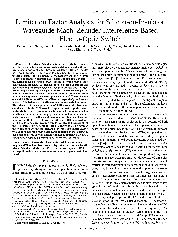摘要
The Mach-Zehnder interference (MZI) structure has played a significant role in research and development of the optical modulator/switch and silicon-on-insulator (SOI) waveguides have been increasingly developed to implement highly integrated photonic devices. In this paper, for the SOI-waveguide MZI-type electro-optic (EO) switch with free-carrier dispersion (FCD) effect, the extra optical absorption (EOA) loss caused by the FCD effect is analyzed and modeled. An intrinsic limitation factor existing in this device is found to be the tension between the EOA loss and the interaction length, resulting in a negative impact upon the device performance. The numerical calculations show that the millimeter-order interaction length has the lowest optical on-chip (OC) loss of about 0.8 and 1.8 dB at the OFF-and ON-state, respectively, and even a lowest OC imbalance of 1.0 dB between the two switching states. The influence of the coupling ratio of 3 dB waveguide directional coupler used in the MZI structure upon the switch performance is also studied, and a push-pull modulation scheme is proposed as an efficient solution to leveraging this intrinsic limitation caused performance decay with a combination of injection and depletion processes for the FCD effect. As a result, the optical OC loss is reduced to 1.0 dB, its imbalance is compressed to 0.2 dB, and the crosstalk at the OFF-state is also better than dB. The relationship between the switching speed and the interaction length is also analyzed. As a vital condition for the FCD-based EO modulation of the switch, the dependence of free-carrier concentration modulation on the drive voltage and electrode gap is simulated via MEDICI software.
- 出版日期2011-9-1
- 单位长春大学
